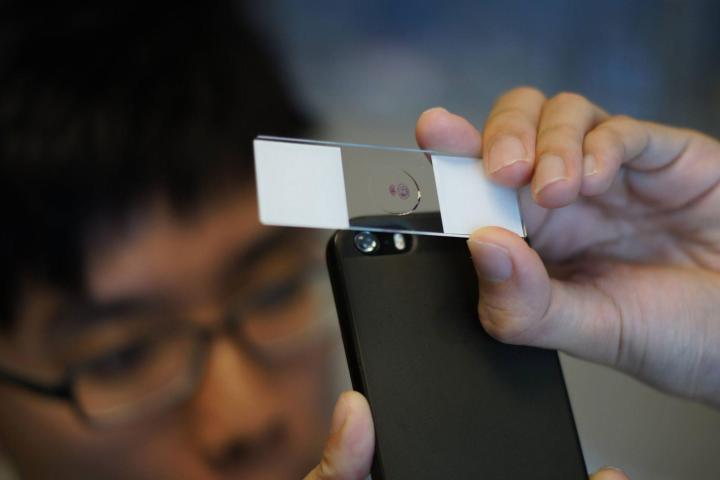
What’s more, this isn’t science fiction, and it’s not only something used by boffins in the university’s lab. It’s called the Dotlens, and it’s on Kickstarter right now. The lens is made from something called polydimethylsiloxane (or PDMS for short), and is flexible like a contact lens. It sticks on to the camera lens like one too, and can be removed and reused without losing any adhesive qualities.
Created by Wei-Chuan Shih, an assistant professor at the university, its discovery happened quite by accident. While working with PDMS, he noticed it cured when heated up, and out of curiosity, he tried making a lens. He stuck the result to his Lumia 520, compared its 120x magnification ability to a professional grade Olympus microscope, and found little difference between the two. The main difference comes in the price — the Olympus scope could cost up to $10,000, while his lens contained materials costing just one cent.
Initially produced by hand, the lenses will eventually be made by a special inkjet printer, which is where the Kickstarter campaign comes in. For $10, backers will get two 15x magnification lenses, which don’t need any special equipment to fit to a phone, and can be used on just about any device out there, without causing any damage.
Targeting schools, where the expense and fragility of a pro microscope puts one beyond reach, the Dotlens will be equally welcomed by keen smartphone photographers, where it can potentially open up a whole new world of opportunity. At the time of writing, the campaign has amassed $2,000 of its £3,000 goal, and still has 28 days to run. If you miss out on the early bird offer, the lenses will cost $20, and delivery should take place in June.


